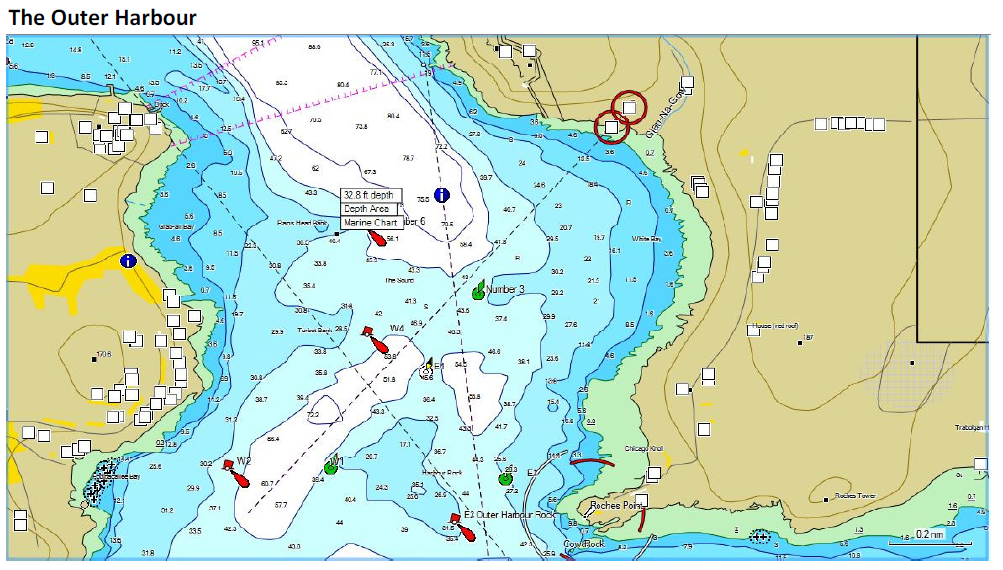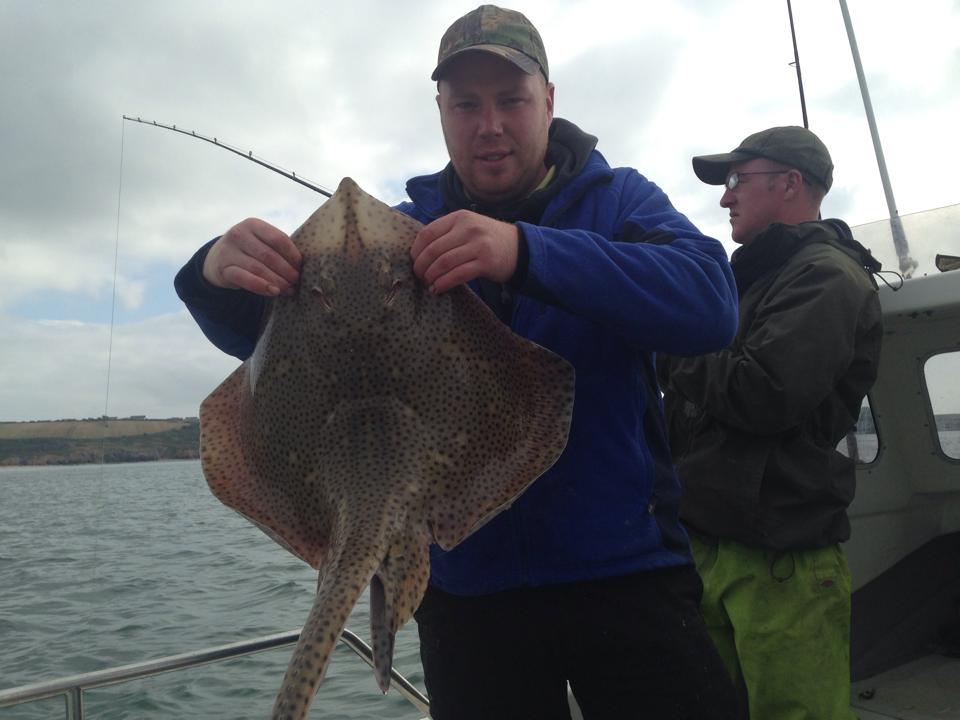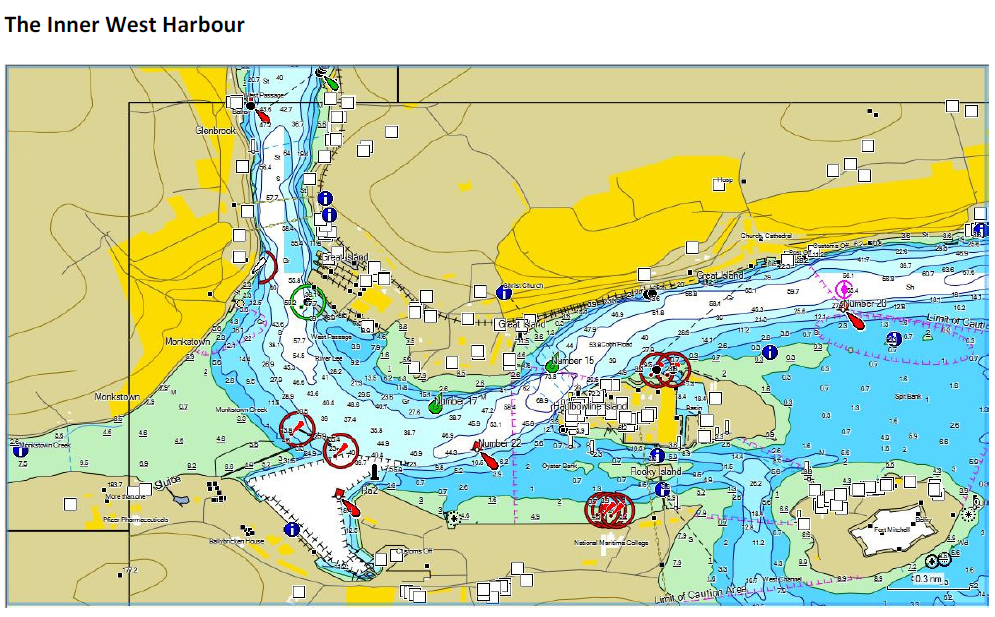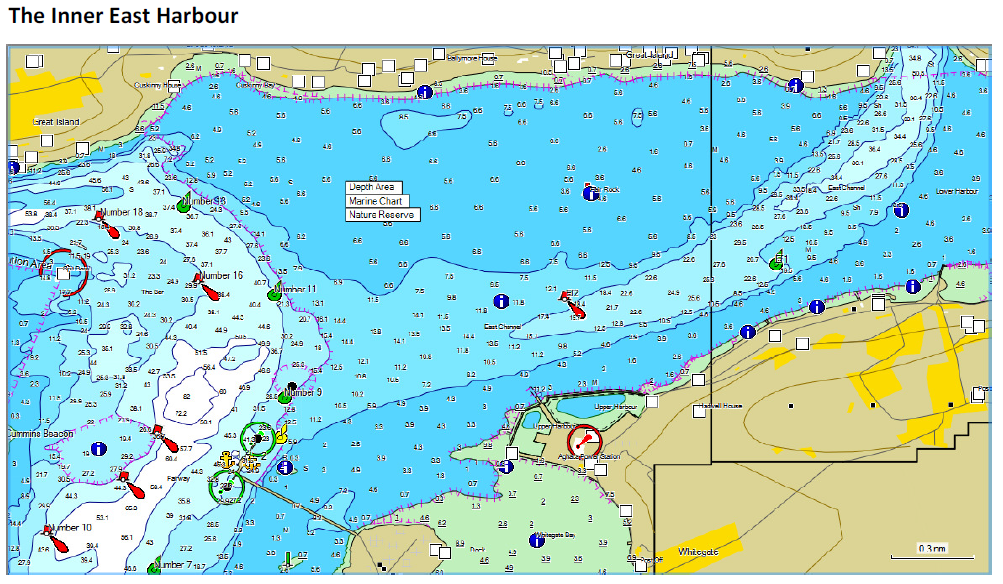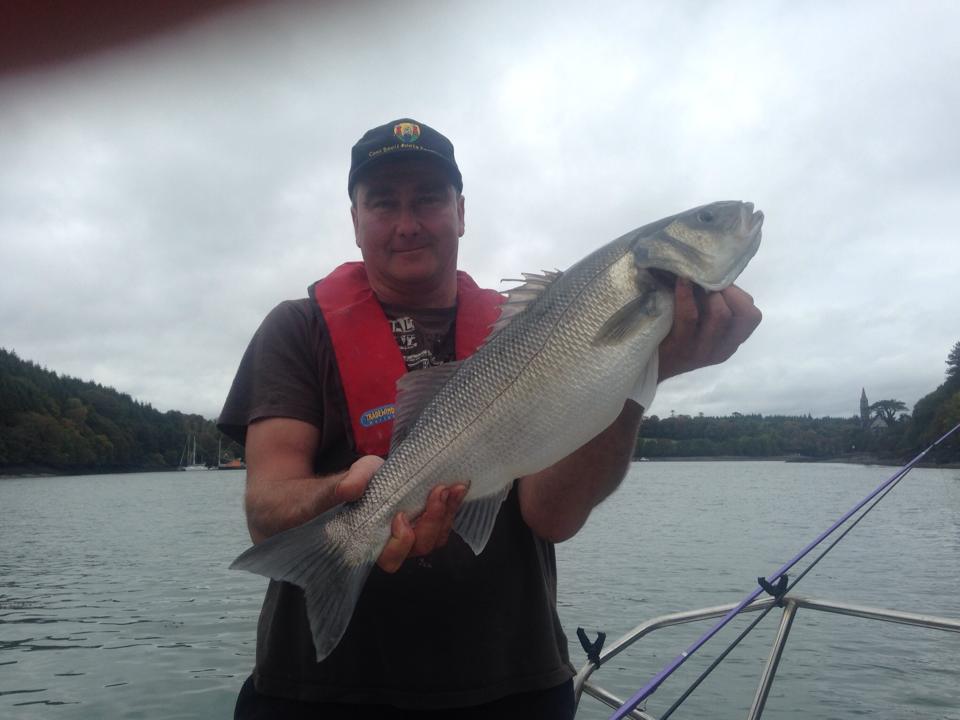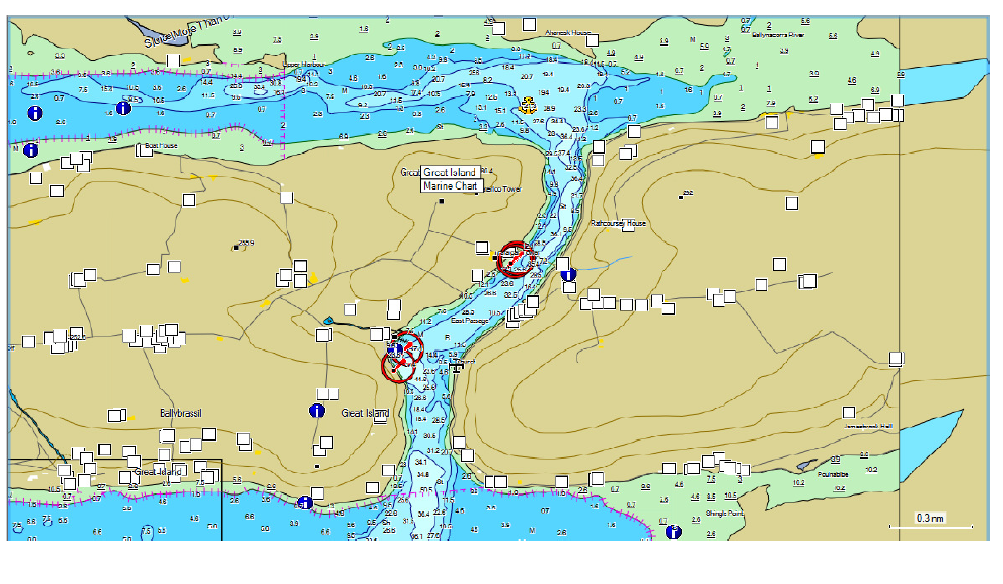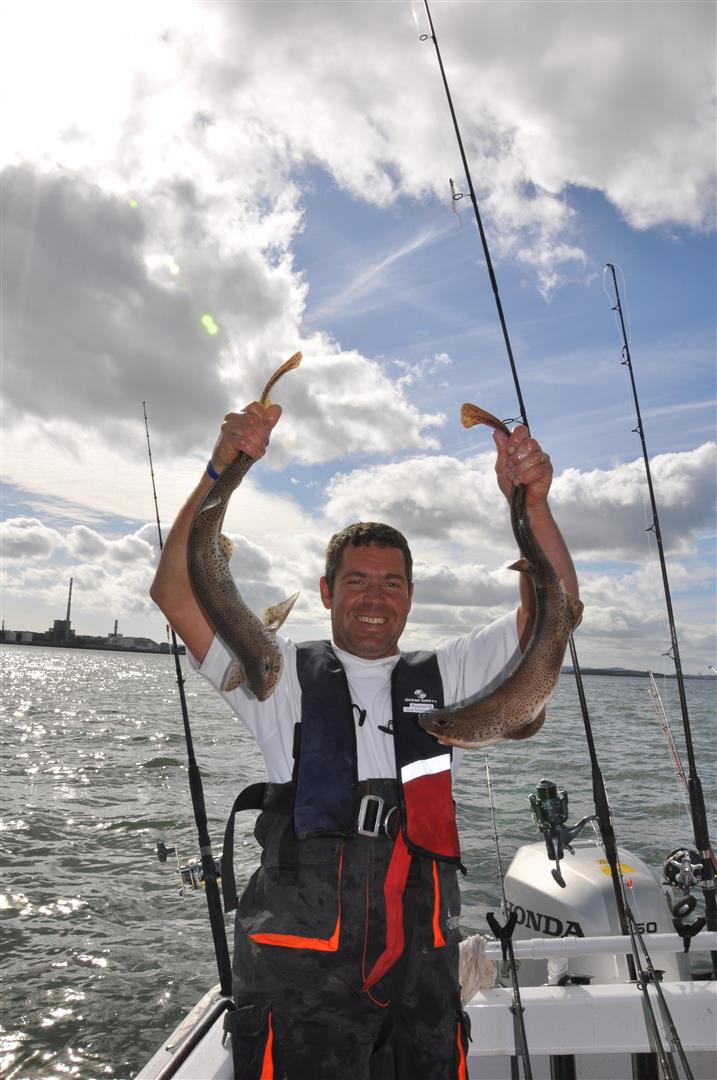Travelling to Cork? Want some info? Read on compliments of the Bella Vista self Drive Fleet
 Fishing Cork Harbour – Bella Vista Self Drive Boats
Fishing Cork Harbour – Bella Vista Self Drive Boats
If you are reading this article you are a lucky person indeed! You are looking forward to some fishing from one of the Bella Vista boats. Our harbour and the offshore grounds offer some of the finest fishing available; in fact, it would be hard to accomplish all that can be done on a short trip. Cork harbour is the location of the Cork Small Boats Festival, an annual competition for dinghy anglers. The competition is a species hunt where the boat with the most species over four days wins – The competition is usually won by the boat that catches at least thirty species! What is surprising about that number is that all but four of those species can be caught with the confines of the harbour. That said the harbour can be a tough mistress – when it fishes tough it can be very tough. This article is designed to give you a flavour of what is available to you and where. The harbour goes through many changes during the seasons. Each season offers different angling possibilities and challenges. We will look at the harbour during the summer season. The summer in angling terms runs from early June right up to October when the water temperatures start to decrease with the coming winter. The harbour can be loosely divided into three parts. The Outer Harbour extending from Roche’s Point outside to The Forts is more “open sea” than typical harbour. The Inner Harbour takes up the area around Spike Island and extends eastward to Aghada. The Harbour Estuaries would be made up of the East Ferry area to the east and the tidal channels of the River Lee as they flow past Cobh to the sea.
The Outer Harbour
The fishing in the outer harbour is more open sea fishing rather than harbour fishing. Starting at the outside and working back towards the forts we begin with “The Harbour Rock”. The rock is bounded on the east by red buoy E2 and on the west by green buoy W1. It can be fished at all stages of tide. Drifting can yield pollack and coalfish and codling are taken on crab. Inevitably you may pick up some ballans around the rock as well. Anchoring will yield ballans and species that are also caught on the drift. The rock is famous for its stock of resident conger eels. A heavy leger or a baited pirk are the most popular methods of tackling these fish. Be warned the congers can go to large proportions; fish in the thirty pounds range are common enough. Probably the most famous venue in the harbour is the “Turbot Bank”. In fairness it is rare that turbot are captured here now but the bank yields an impressive array of species the biggest of which are blonde rays. The Irish record blonde ray was captured and released here a few years ago. Blondes will be caught at anchor using a heavy leger trace with a strong 6/0 hook. Best baits are squid or mackerel. Blondes may feed at any stage of tide but the coming tide seems to be more prolific. Depending on the stage of tide anchor up at the base of the bank and flick your bait from the boat. On the stronger tides the run can be ferocious so it would be best to avoid the strongest periods of the biggest tides. There is an unofficial “catch & release” policy for blonde rays. Many charter skippers tag rays so if you get a tagged fish make sure to take the number, the weight and measurements of the fish. Sending the details back to the Fisheries Board will earn you a tee shirt! While fishing for blondes make sure you send out a smaller leger baited with worm or crab as the chances are you will hook a plaice or dab. At different stages of the season you will also catch whiting and codling on the bank, sometimes to plague proportions! The bank should not be ignored by the bass anglers either. During slack tides drifting the bank and the area to seaward known as “the sound” can yield nice flat fish, codling and whiting. While mackerel baits may catch some flats it would be wise to have some worm or crab. East from buoy 6 you will see the golden sands of white bay. The area is well known for producing flats on the drift and the rougher ground around buoy three produces dogs in abundance and nice huss. All along the shoreline on the eastern side is worth fishing for bass. On the outermost part of the eastern side of the harbour is Roche’s point. The rocky reefs near the point are excellent conger fishing areas. Good wrasse will be taken here on crab and rag baits. South of the Turbot bank between the forts you will find “dognose” bank. This is more of a deep hole where the water is more than one hundred feet deep. Later in the year this area will hold good codling and whiting.
The Central Inner Harbour
The central inner harbour is an ideal place to fish when conditions do not allow you to fish offshore or in the outer harbour. The area around buoy ten can hold thornback rays and doggies. The deep water off the Whitegate Refinery jetty holds mackerel during the summer; drifting here can yield whiting, gurnards and codling. North of the jetty in the area known as Corkbeg there is a fine sheltered bay that fishes well for bass, rays and codling. In the middle of the bay here is the area known as “Black Rock”. It is marked with a green topped perch and can yield good bass to plugs around high water (Careful Navigation!). On the northern side of the jetty is Whitegate bay. The bay is shallow and much of it dries out however careful navigation can put you into the area of the power plant outflow. The habitat created by the outflow of cooling water is varied and it is here you can fish for schoolie bass, golden grey and grey mullet and the elusive gilthead bream. The outer part of the bay throws up thornbacks, doggies and huss. The west channel runs behind Spike Island to the west. The area near the bridges to Haulboline Island is prime bass and flounder country. Best to fish here with bait and the ebb tide is favoured. Beware around this area of the harbour at low water as there are many banks around especially near the area of the bridges.
The Inner West Harbour
The Inner West Harbour is located to the west of Cobh. The above picture ends just beyond the dockyard but there is a huge area of estuary above this point. The narrow channel opens into Lough Mahon and there is the area around Little Island and Fota. I have already mentioned the bridges to Haulbouline as a recognised bass haunt. To the west of the bridges there are some mudflats where the dedicated few will target flounder. The deeper channel areas around buoy 17 and 22 will also yield flounder and doggies and will hold codling later into the autumn as well the area around the deep water berths near Cobh and Ringaskiddy. The quay walls of Cobh and Haulboline will produce conger but these really are areas to be used as a fall back in poor weather conditions. I would say this area whole area of the harbour is a fishing alternative when you cannot get to the outer areas or beyond.
The Inner East Harbour
The Inner East Harbour stretches from the refinery jetty east towards Aghada and the mouth of East Ferry. The area is fairly uniform in depth except for the east channel which runs towards the mouth of East Ferry. The area used produce many rays and even tope but years of trawling have diminished the area considerably. East Ferry rock is viable bad weather alternative for dogs and the occasional ray.
East Ferry
East ferry is somewhat of an enigma amongst bass anglers. The lower channel between the mouth and the marina at Marlogue can be one of the most productive bass fishing areas. The upper area of the channel produces some fine bass as well. In inclement conditions the “conger hole” a deep area close to the rocks near the marina is just that – a good area to fish for congers in bad weather! The choices here are many – try drifting the area using soft plastic baits, anchor close to the shoreline with crab baits or even try a live bait. The upper areas of the ferry, where it opens up to the east and west, like the upper regions of the Lee estuary are largely undiscovered waters. Bass can be had in these areas as well as flounders and the inevitable doggies. Few boat anglers fish in these areas – why would you when you have so many other areas to work in – but it could just be the area that produces that superb double figure bass.
Tackle
Obviously the most fun can be got by matching your tackle to the species you are fishing for. It is obvious as well that if flying in you cannot take every rod you have! If limited I would try to bring three rods for the trip: Firstly a 12/20lb class rod is a perfect tool. You can use this to fish for congers and it will be equally at home on the drift in the offshore areas and will cope with the demands of tide and blonde rays. A lighter uptider or 6/12lb class rod is also recommended – something of a flattie rod – that can be used with a four to six ounce lead while drifting around the banks and reefs. It would also be happy shadding for pollack on the Smiths or the Ling Rocks. A spinning rod is a necessity for plugging, soft plastic fishing and even bait fishing for flounders or plaice while at anchor. Your spinning rod will also tackle mullet, bream and if nothing else you can wander the shoreline if the weather is bad. Remember you are fishing from a small boat; very long rods should be avoided. If you are not limited by flying there would be no harm in bringing a beach caster just in case you cannot get afloat and have a notion to spend time on some of the local beaches.
Terminal gear is always a matter of personal choice. Apart from your favourite plugs, poppers, spinners and plastics – there is no one “magic” lure to bring – you will need a good range of terminal gear. Sabiki’s or Hokeye style rigs of varying types and sizes will suit the outside fishing. Conger traces are a must; the locals prefer a baited pirk to a leger rig. Leger traces for drifting the sandy areas would be important. Bring some mullet gear as you will surely be tempted when you see them! Some 60lb to 100lb mono and plenty 6/0 to 8/0 hooks will see you right for the congers and blonde rays. Some plastic booms for shadding and leger fishing will not go astray. If you have a hankering to tackle some blue sharks be sure to bring the traces for these as well. Do not panic too much when organising your tackle as between the Bella Vista’s little tackle shop and the local angling stores you should be able to get what you are looking for if you forget something at home.
The Outside
In this brief over view of the fishing in the cork area there is not enough space to write about the varied amount of fishing available outside the harbour. The ground is a mix of sand, reefs and broken ground, not to mention some wrecks thrown in for good measure. At about four and a half miles from the harbour entrance you have an area of reefs know as “The Smiths”. This area is worth an anchor or a drift. The area around the smiths is mixed ground and can throw up many different species. The area off Power Head in the east is rocky ground and there are areas that can be explosive for conger fishing, especially an area known as “The Terrace”. Further east towards Ballycotton there can be good mixed fishing on the drift. To the south of the harbour entrance, at a distance of nearly twelve miles are “The Ling Rocks”. If mixed fishing is what you are after a trip here is a must during your stay. The rocks themselves hold good pollack it is here that the elusive twelve pound specimens reside. Drifting the rocks will yield a good array of species. Drifting north off the rocks is recommended as when you get deeper water and mixed ground you can encounter red gurnards, whiting, haddock, cod and ling, not to mention megrim!
You will find that most of the areas discussed above are marked as waypoints on your GPS. It is important to talk to fellow anglers to find out where is fishing best while you are over. Speak with Kevin Murphy as he is usually in tune with what is happening in the area. I would always recommend that you take a guide on your first trip in the area. Your guide will tell you more in a few minutes than we can manage in this short piece. Cork harbour offers many possibilities for a great angling holiday. Some days it seems like the fish are trying to give themselves up! Some days it appears that you couldn’t buy a fish. Cork harbour can be a tough mistress but you will find that those who work hard and put in the effort get rewarded. I cannot stress how important it is to talk to local anglers and find out what is happening around the area at the time of your holiday. After that it is down to you to get out there and get fishing! Have a safe holiday. Take care as you whiz around the harbour. The Bella Vista fleet is an excellent fleet of boats and the Warrior 175 is a high performance vessel. Enjoy and Tight Lines!
Jim Clohessy
June 2011

